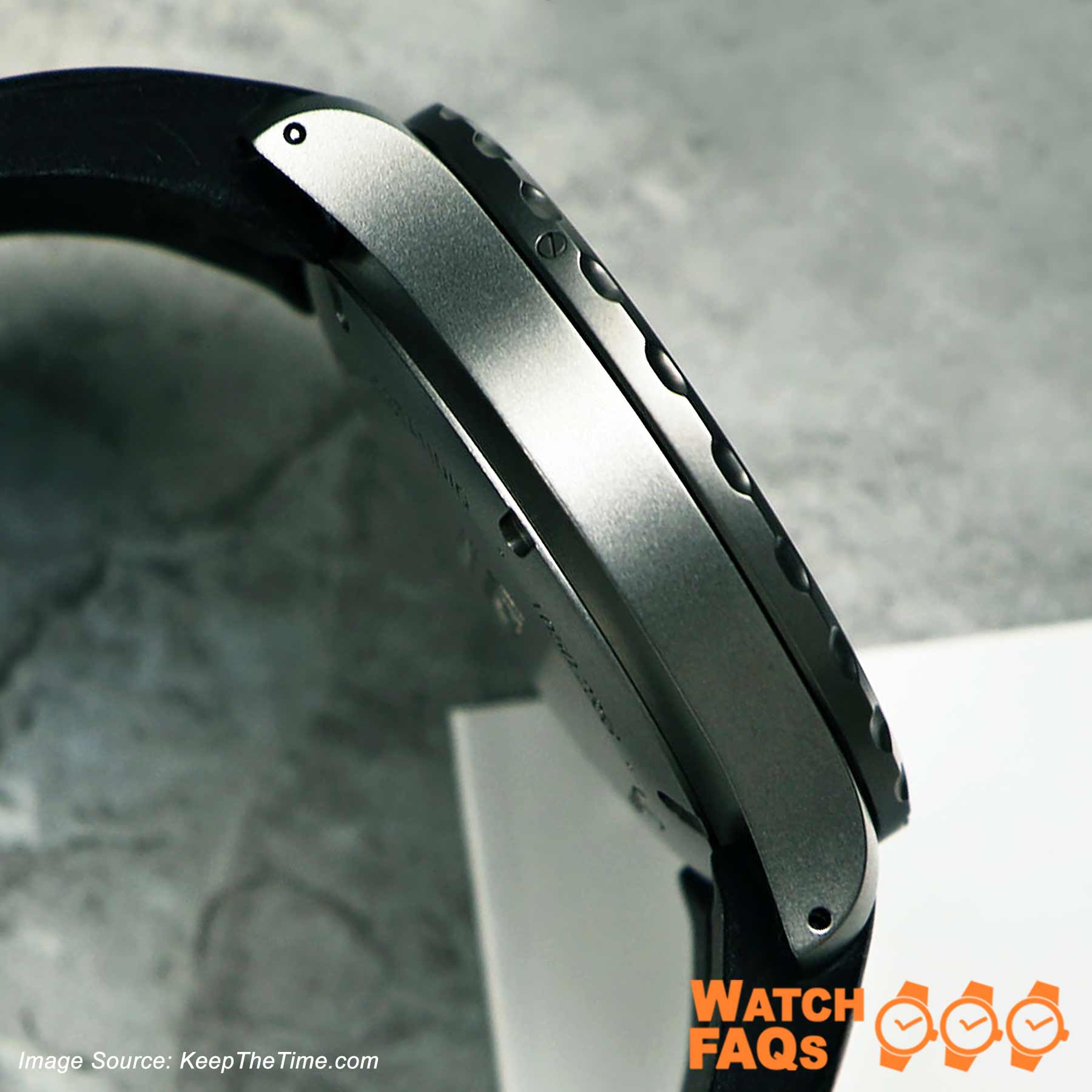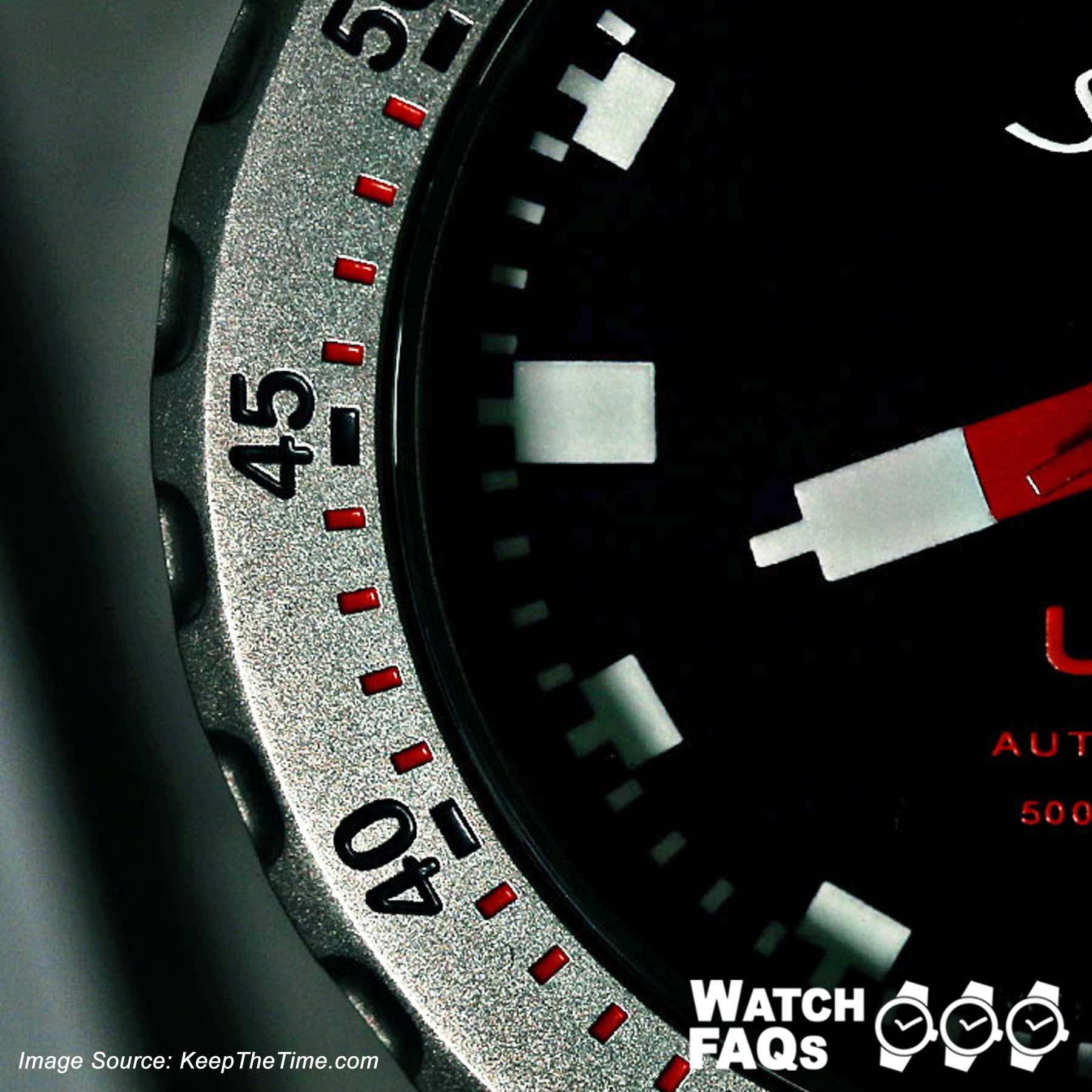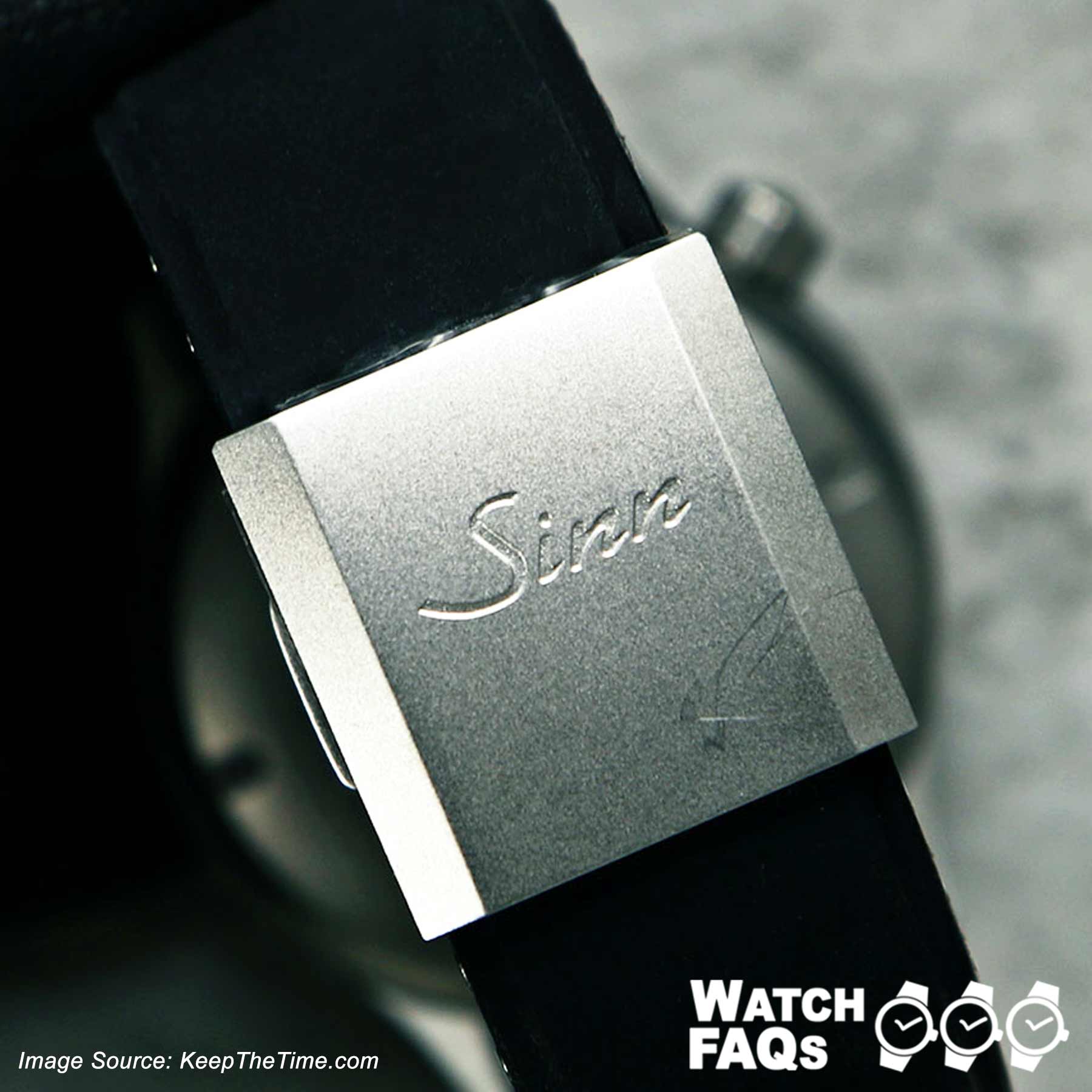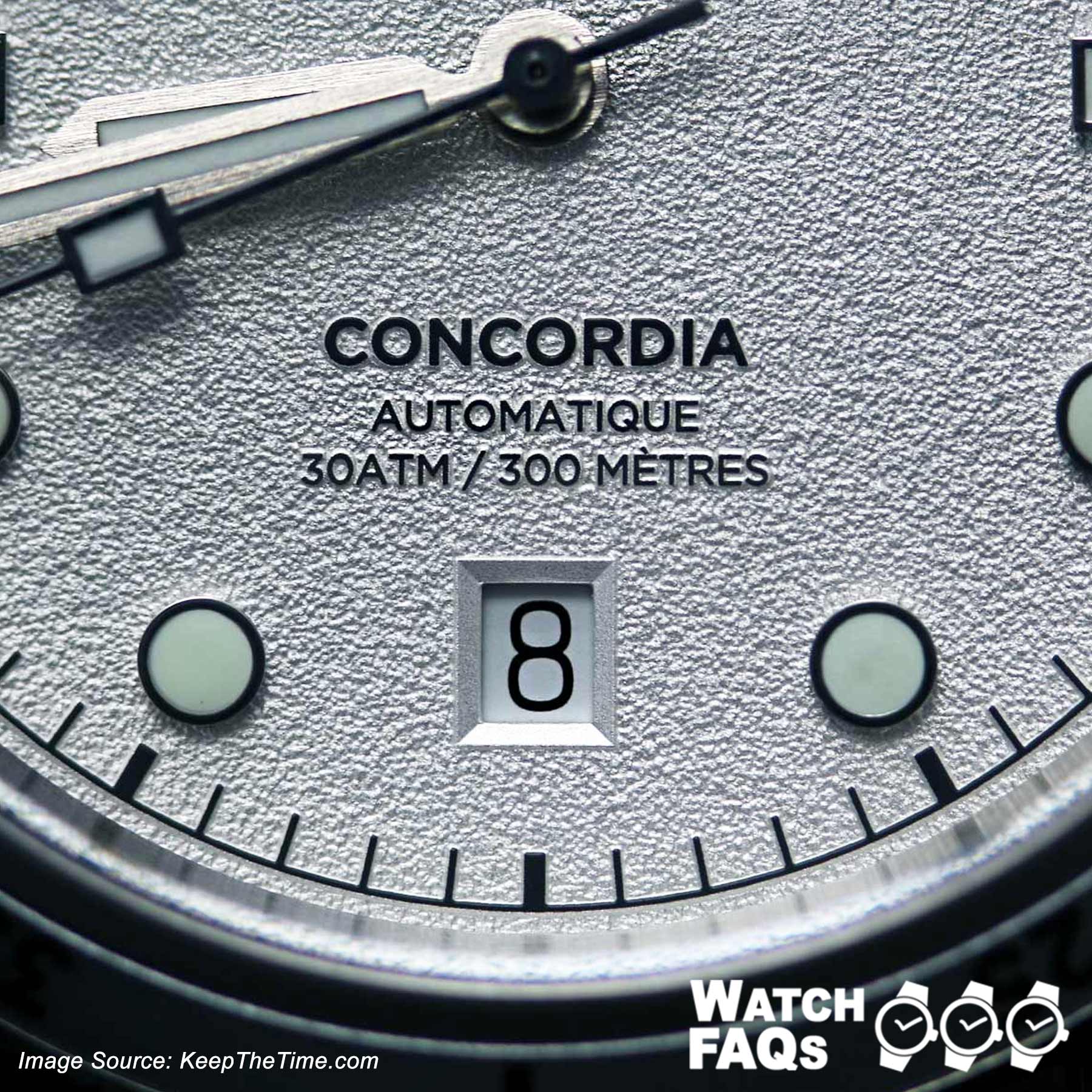A bead-blasted aka sandblasted finish is a grainy yet smooth feeling finish on a watch, created with a sandblaster.
Sandblasting is typically found on a tool watches. Any part of the metal can be blasted, such as the case, bezel, bracelet and clasp. It is an ideal finish for tactical or military watches because it is not flashy, producing minimal reflection.
It is also considered to be durable and tough because the way light surface scratching blends in with the uniform texture. However, that isn’t to say scratches don’t show up on sandblasted finishes.
One of the cons of sandblasted watches is that when scratches are deep enough, they will stand out. Another disadvantage is that refinishing can’t be done easily by hand as you will need to put the blemished piece back in the sandblasting cabinet and hit it with the blaster. That is a major pro if you have access to a blaster with the correct medium.
Sandblasting “medium” refers to the material used to shoot out of the high pressure sandblaster against the object you are blasting. Different mediums produce a different finish depending on the metal. Common mediums are glass beads and walnut shells.
In watch design, sandblasting is not only limited to the case, bezel or bracelet. The bead blasting method can also be used for creating unique finishing on a dial. For example, the Charlie Paris Concordia watch below used light sandblasting to achieve the textured appearance on their “Tundra” dial:





 network of watch sites
network of watch sites


